| BEE | FLY |
|---|---|
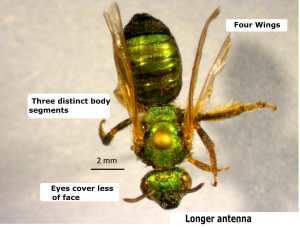 |
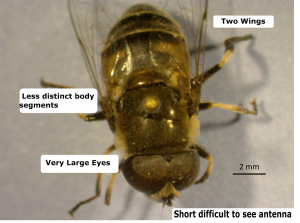 |
WASP

WINGS
Flies have one pair of wings while bees and wasps have two pairs. This may be difficult to observe when the insect is at rest. Flies usually hold their wings out at a 45° angle from their body. The wings are broad through the middle and may seem patterned. When bees and wasps rest, their wings usually lay flat against their bodies, sometimes crossing over at the tips. Their wings are narrow near the body and most broad at the tip. They may appear dark or iridescent but tend to not have a distinct visible pattern.
BEE BEE FLY

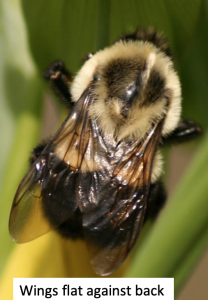
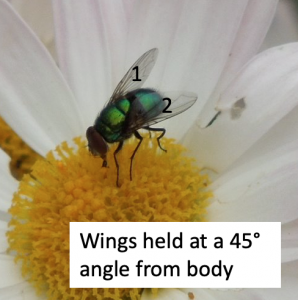
HEAD SHAPE, EYES, ANTENNAE
When observing the head of most flies, you will notice that they have short or barely visible antennae and that the eyes are very large, covering most of their face. Eye color can be black, red, or yellow.
Bees and wasps have long antennae that may appear jointed. Their eyes are oval-shaped, black and positioned on the sides of their head, leaving a “forehead” area. The head itself may be triangular.
FLY
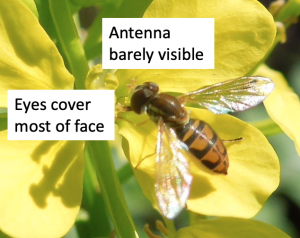
BODY SHAPE AND SIZE
Flies rarely have a distinctive waist. They have round, short bodies with long wings. Bees and wasps have a distinct three-part body shape (head, thorax, abdomen) with a narrow waist. The body is often longer than the wings. Bee hind legs are hairy than wasp back legs.
Bees come in many different sizes. Small bees like sweat bees can be shorter than a quarter of an inch long. Bumble bees are among the largest bees you will see, reaching up to an inch long. Most flies you will see will be small and no more than a quarter of an inch long.
Bee
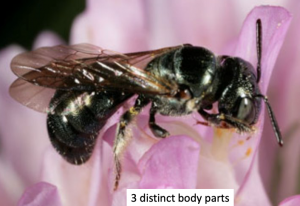
COLOR
Color alone cannot be used to differentiate bees, flies, and wasps. Coloration in bees is highly variable. Bees can be metallic greens and blues, solid black, orange, or have black and yellow stripes. Flies and wasps can also be these colors. In fact, some flies mimic bees by having similar colors as bees to try to ward off predators.
SWEAT Bee

COMMON FLIES THAT MIMIC BEES
HOVER FLY OR SYRPHID FLY DRONE FLY
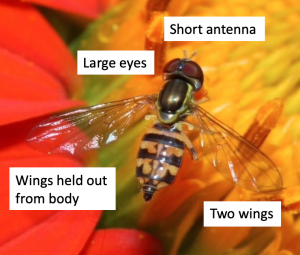
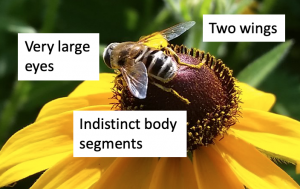
BEHAVIOR
In addition to physical characteristics, you can use the behavior of the insect you are observing to help with identification. Hover flies often hover in place and fly erratically, while bees generally do not hover in place and will move slowly from one flower to another. Wasp are generally predators, feeding on other insects instead of on nectar and pollen. Some wasp species are pollinators, but you are more likely to see bees and flies visiting flowers than a wasp.
CICADA KILLER WASP WITH PREY
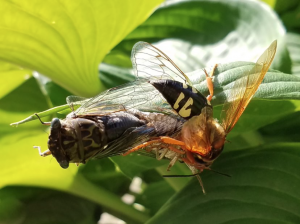
Check out this video from CU Pollinator Count about distinguishing between bees, flies, and wasps.
HERE IS ANOTHER VIDEO FROM NORTH CAROLINA EXTENSION ABOUT IDENTIFYING BEES, FLIES, AND WASPS THAT GOES INTO MORE DEPTH ABOUT BEE ANATOMY AND BEHAVIOR.